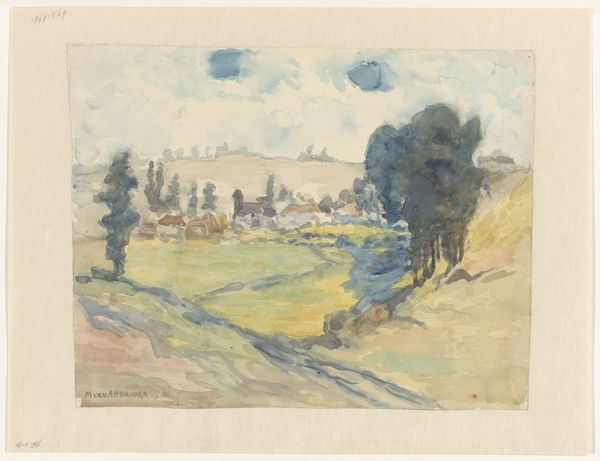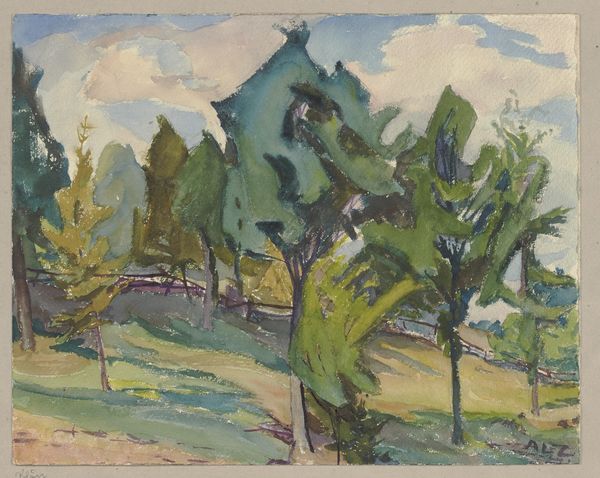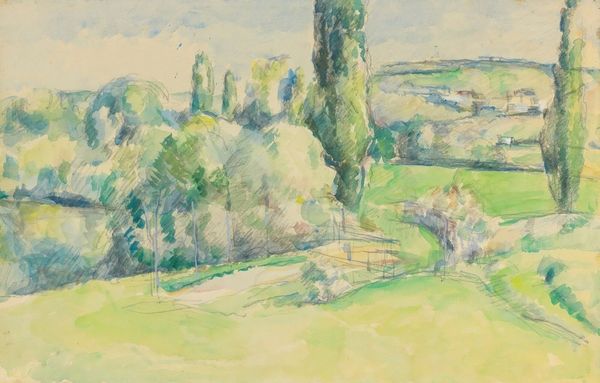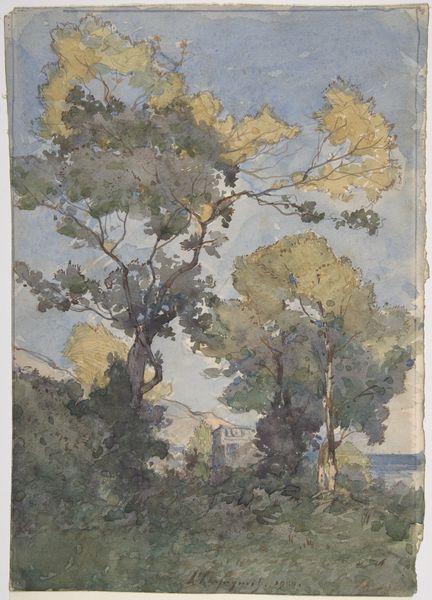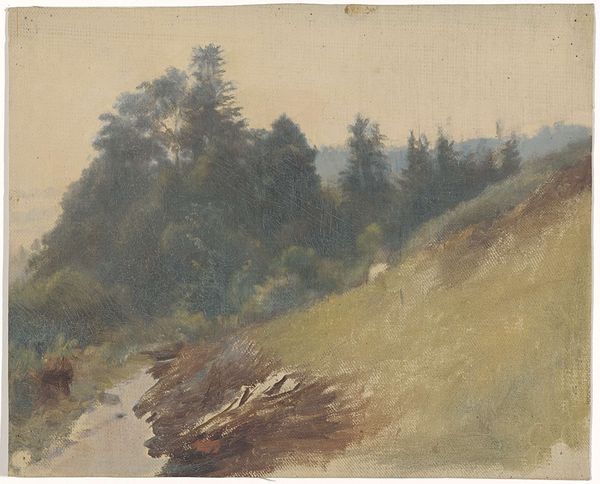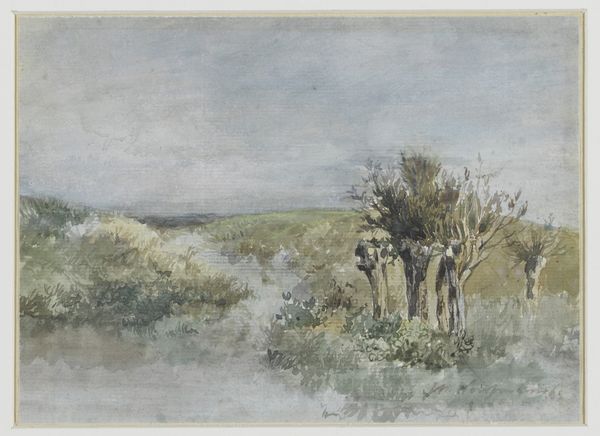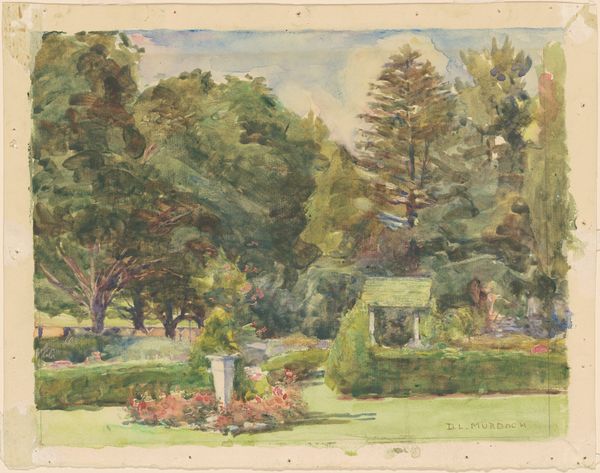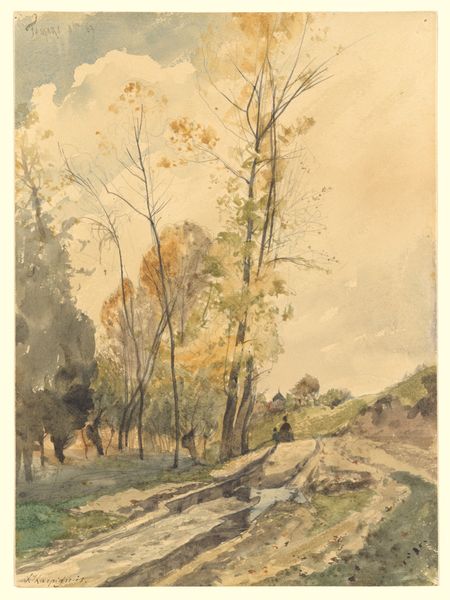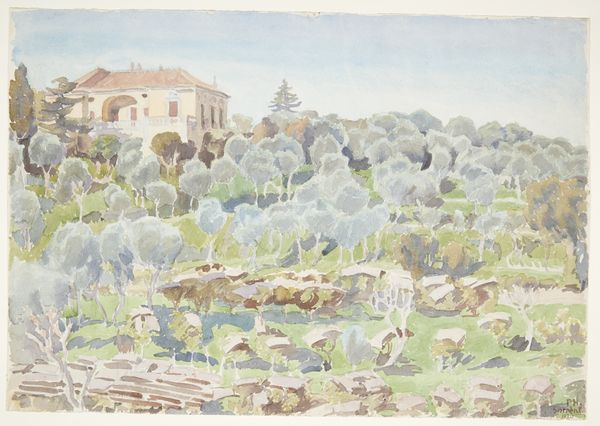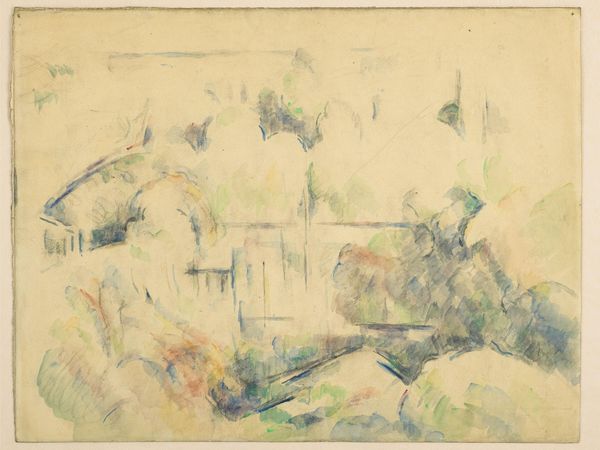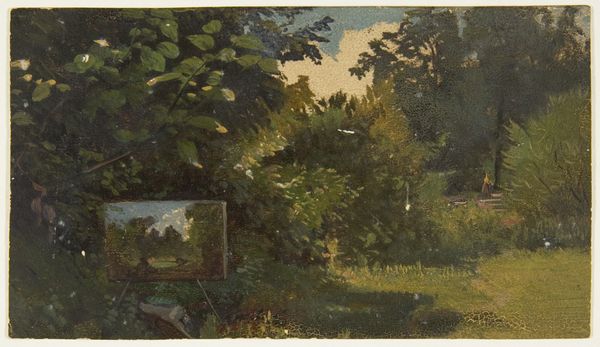
painting, plein-air, watercolor
#
water colours
#
painting
#
plein-air
#
landscape
#
watercolor
#
coloured pencil
#
botanical drawing
#
realism
Dimensions: height 425 mm, width 341 mm
Copyright: Rijks Museum: Open Domain
Curator: This is Martinus van Andringa's "Landscape with Resting Farmer by a Horse," created sometime between 1874 and 1918. It resides here at the Rijksmuseum. Editor: Immediately striking, it feels melancholic. The muted tones and loose washes give it a dreamlike, almost fleeting quality. The eye is drawn through layers, with that solitary figure in the foreground grounding it all. Curator: The piece exemplifies plein-air painting of the period; we see Andringa’s engagement with capturing the immediate sensory experience of the landscape. It’s watercolour and colored pencil, allowing for transparency and layering that creates atmospheric depth. Editor: Precisely. Look at the texture achieved through the varying brushstrokes and pencil marks. The rendering of light is interesting – the interplay between the hazy sky and the dappled field, especially how the washes are controlled in certain regions, almost scribbled in others. The horizon line almost seems dissolved by light! Curator: We should also consider Andringa's positioning within the broader socio-economic landscape. Works such as this reflect a growing interest in rural life, yet they also romanticize the often-harsh realities of agricultural labor. There’s a focus here on leisure and the natural environment, maybe a world apart from Andringa's urban reality and social circles. Editor: Perhaps. But in visual terms, I'm drawn to the almost geometric arrangement of the trees against the softer background, they echo each other rhythmically, adding stability in contrast to that light ground fog below, it’s really subtle, but it’s doing a lot to the composition. Curator: I agree that tension between control and looseness is interesting. The deliberate choice of medium speaks to certain values within artistic production at that time—watercolors held a specific place, not as "high" art necessarily but highly regarded, portable, craftlike, a different category than oils maybe. Editor: Thinking about the color choices also deepens the viewing experience—how the predominantly muted palette subtly draws the eye toward those red rooftops, just breaking through the dominant greens and yellows; it seems very intentional. Curator: Well, that sort of tension is a really key aspect to understanding this type of landscape. Editor: Indeed. Looking closely like this has highlighted the visual conversation the painting invites us to join, the formal with social context, if you will.
Comments
No comments
Be the first to comment and join the conversation on the ultimate creative platform.
